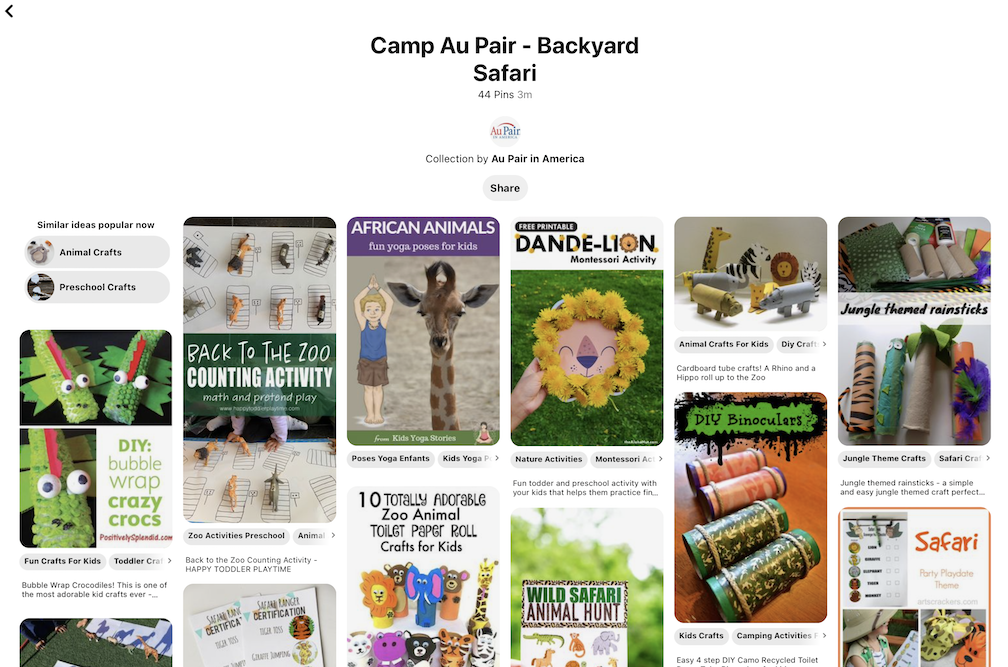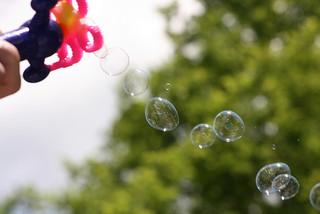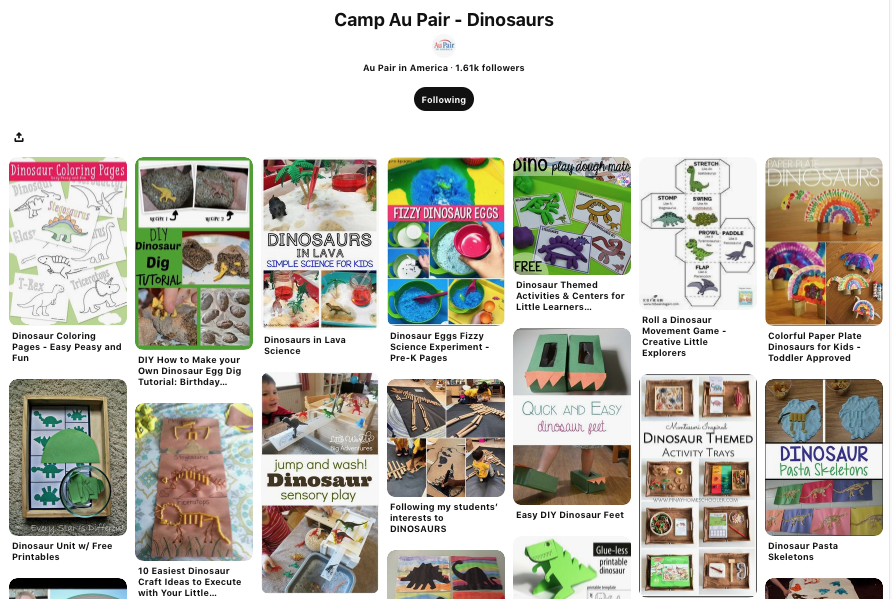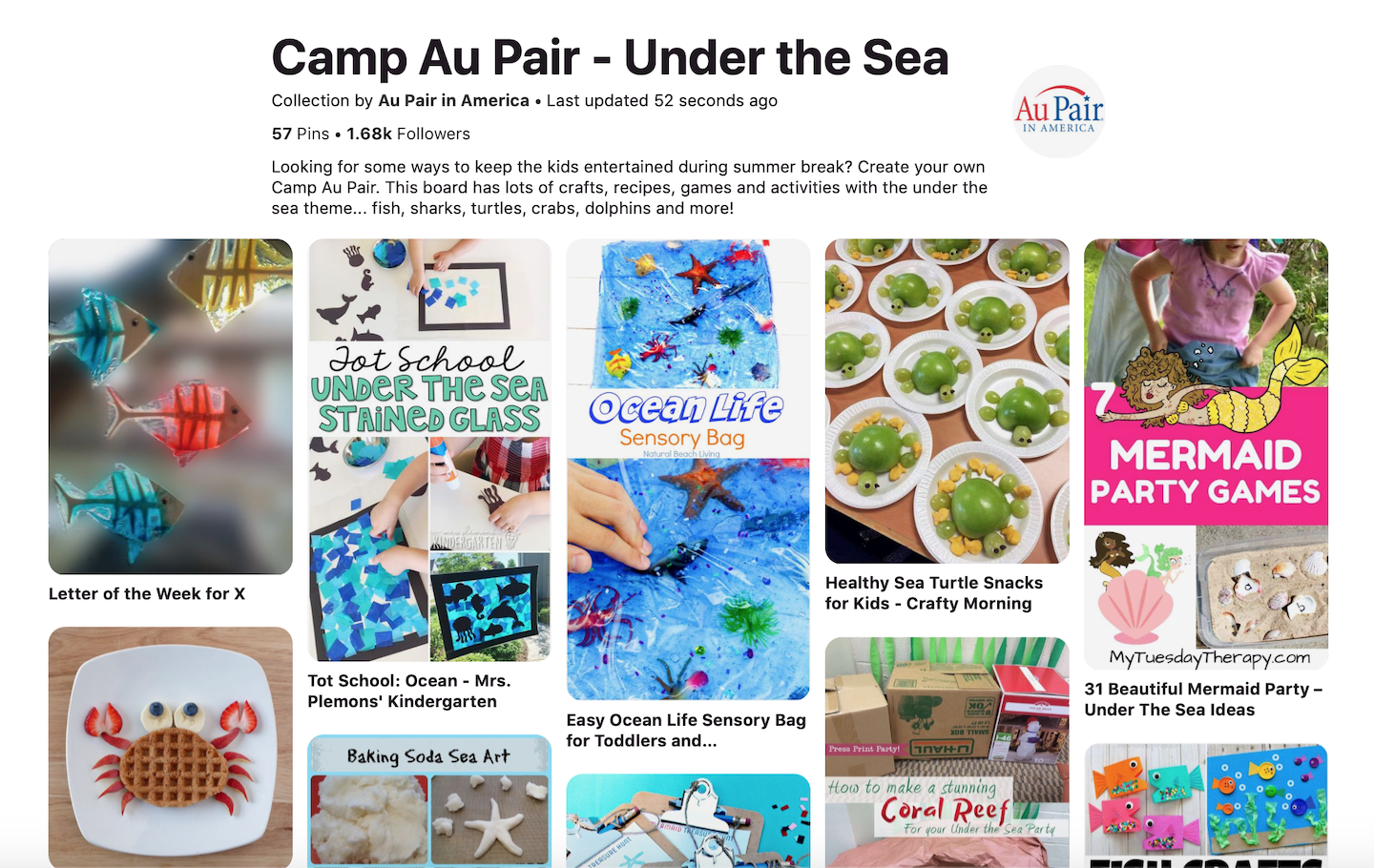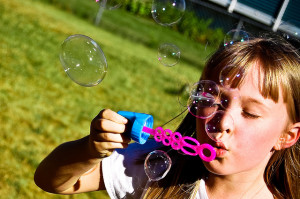 Here are some ideas to keep your kids busy this summer!
Here are some ideas to keep your kids busy this summer!
Top Ten – How to Manage Longer Days with Children – When School is out and Camp isn’t On!
Au pairs should always check with their host parents to seek approval for any childcare activities.
10. Start A Summer Scrapbook!
Include drawings, pictures, and journal entries of activities from the summer. It will be special because children and their au pair created it together. This could be a hard version, a computer generated one, a movie of daily clips set to music…..they could even make 2 copies – one for her and one for them to keep!
9. Have a picnic!
Spread the planning and preparation across a few days to get them excited!
First, decide on a location, and have a few choices from which the children can pick. For example, their backyard, a town park or near a pond. Include a rain plan – will they choose an alternate in door solution or go on another date? Create ballots and let them vote!
Make the picnic ‘basket’ —- use a plain box and let the children decorate it! Then, decide on a menu — look up recipes and shop for the ingredients together….prepare anything that can be done ahead of time — and then when it is “the day,” finish the picnic packing and go!
8. Switch It UP
Have dinner for breakfast and breakfast for dinner! Plan the menu and prepare together!
Who doesn’t like pancakes for dinner???? (If their host parents don’t, then ignore this one!)
7. Have a Pajama Day!
Plan an indoor PJ day. Choose books to read, cookies to make, a movie to watch, indoor tent with blankets and go! Think of it as a snow day (on a rainy day) in the summer!
6. Six websites with nifty ideas!
Create your own holiday www.educationworld.com/a_lesson/lesson018.shtml
Start a collection www.ehow.com/how_10563_start-collection.html
Scavenger Hunt http://www.lovetheoutdoors.com/camping/kids/scavengerhunt.htm
Build a sandcastle www.sandcastlecentral.com/toolpages/
Plant a garden www.geocities.com/mastergardener2k/
Make a bubble solution www.bubblemania.com/faq/solution.html
5. Park it!
Make a list of area parks. After each visit, have the children critique it….what was good, what did they like about it….what didn’t they like? Create a chart with applicable headings including a rating system. At the end of their comparison, their chart will show them where they like to go for what activities, etc. This is a great hand down tool as well for subsequent au pairs or the parents themselves!
4. Taste Test Day!
Buy several brands of vanilla – and try one bite of each and see what they like best! Or do flavors – let the children choose! Different versions….yogurt tasting, cheese/crackers, salsas or red vs. green grapes!
3. Make a Diorama!
Have children re-create a scene from their favorite book, zoo or outing. http://www.ehow.com/how_12761_make-diorama.html
2. Have a home book club!
Everyone read the same book – and compare your thoughts on it.
Here are some ideas: http://www.scholastic.com/ups/campaigns/src-2015
1. AP Day!
Once a week — have a Day dedicated to the au pair’s country! Eat some foods from her country…and have her share typical summer activities she did growing up. She can read the children a book in her native language as well as teach them how to sing and count! As the children get the hang of it – they can make a list of things they would like her to teach or tell them. Au pairs could even team up to share ‘days’ from their countries with each other’s children!
Photo: Flickr Ryan Hyde


